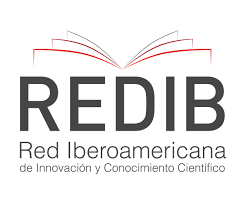Airtight
DOI:
https://doi.org/10.9771/peri.v3i20.58803Abstract
“Airtight”, as both a short story and literary production, emerges from a portrait or an experience that delves into notions of waiting, relationships and internal structures. Explored through metaphor, these elements have the power to convey emotions through what confines them. The narrative takes on implicit paths, as the absence of unveiling constructs points of tension. Even in its mystery, the text becomes clear. The setting of the story, or its precise translation into English, "Airtight," resides in the suffocating cloister of something that is not manifested, or rather, not made explicit. Nevertheless, it never fails to inhabit a commonplace, a relationship so profoundly marked by nauseating normativity. From “Airtight”, one thing that is anticipated is the muffled sound of a closing lid.
Downloads
Downloads
Published
How to Cite
Issue
Section
License
Copyright (c) 2024 Emily Aragão

This work is licensed under a Creative Commons Attribution-NonCommercial 4.0 International License.
Authors who publish in this journal agree to the following terms:
Authors retain copyright and grant the journal the right of first publication, with the work simultaneously licensed under a Creative Commons Attribution Noncommercial License that allows the work to be shared with acknowledgment of authorship and initial publication in this journal, but prohibits commercial use.
Authors are authorized to enter into separate additional contracts for non-exclusive distribution of the version of the work published in this journal (e.g., publishing in an institutional repository or as a book chapter), with acknowledgment of authorship and initial publication in this journal.
Authors are permitted and encouraged to publish and distribute their work online (e.g., in institutional repositories or on their personal website) at any point before or during the editorial process, as this can generate productive changes and increase the impact and citation of the published work (see The Effect of Open Access).








